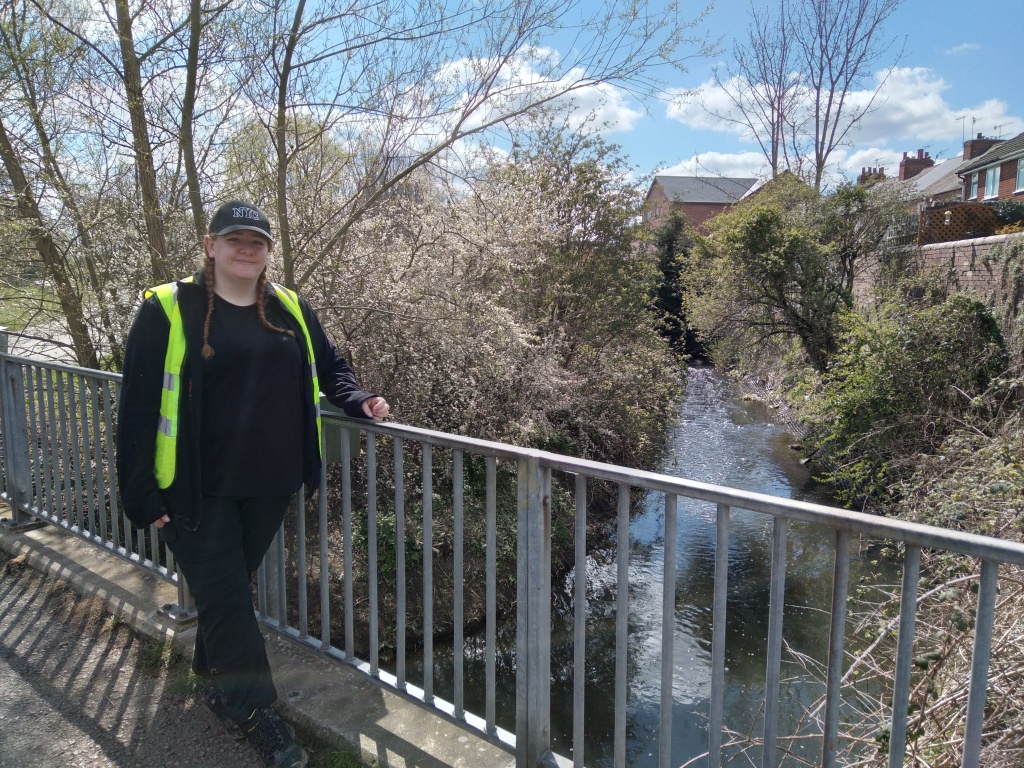The Don Valley Way has several heritage walks. In this series of blogs we are going to explore these walks and the fantastic features that can be seen on them.

This time we are going to talk about the Sprotbrough walk Tails of Knights and Heroes. The walk is 2.45 miles or 3.95KM long and is mostly flat with some bumpy tracks in the woodland areas. This walk will take roughly 1 hour and 15 minutes to complete. For more information on this walk click here to see its page on the Don Valley Way website.
The trail starts at the junction of Nursery Lane and Boat Lane. On the corner of these roads is the old toll house built in 1849 for Sir Joseph Copley, and used to collect payment for crossing Sprotbrough Bridge. Sprotbrough Bridge was constructed in the mid 19th century with the central span being replace in 1897 with Iron work from the Sheffield Company Newton Chambers. As you begin the walk you will see the magnesium limestone known as the Don Gorge. The Don Gorge was formed as it was eroded by glassier flows and more recently the River Don, which flows at the base of the gorge.

World War II flying Ace Sir Douglas Barder grew up in a house along the left side of Boat Lane in the old rectory. He was born in London in 1910 but moved to Sprotbrough after his mother married the vicar of the Sprotbrough Church. In 1928 he joined the RAF as a cadet and became a piolet who was known as a dare devil because of his habit of preforming dangerous stunts. In December 1931 whilst preforming unauthorised low flying aerobatics he crashed and had both legs amputated, one above and one below the knee. In 1939 he re-joined the RAF to help with the war effort against the Nazis. He was credited with shooting down 22 aircraft and damaging 11 aircraft before being shot down and captured on 9th August 1941. Douglas spent the rest of the war was as a prisoner of war. He was knighted in 1976 for services to disabled people. Aged 72 Douglas died in London in 1982.
Sprotbough is mentioned in the Doomsday Book as Sproteberg and predates the Normans (1066) with the name probably originating from the old English Sproter meaning shoot or twig and Berg meaning village. The village mentioned in the book only had 10 households. The lord of the manor in 1066 was Swaine Son of Swarvie but by the time of the Doomsday Book in 1086 was recorded as Rodger De Busli. De Busli or Bully was a Norman Barron, who accompanied William I or William the conqueror Duke of Normandy on his successful conquest of England in 1066. As a reward he was given 86 manors in Nottinghamshire, 46 in Yorkshire (the best county) and others in Lincolnshire, Leicestershire and Derbyshire.
The Ivanhoe pub along the route gets its name from the Sir Walter Scott novel of the same name. Sir Walter is said to have visited the village and taken inspiration from the area when writing Ivanhoe. He used Conisbrough Castle as part of the backdrop to his novel. The opening lines to the novel show the beauty of the Don Valley. “In that pleasant part of merry England, which is watered by the River Don. There extended in ancient times a large forest, covering the greater part of the beautiful hills and valleys which lie between Sheffield and the pleasant town of Doncaster.”

At the end of the walk the old Copley Water pump house can be seen as a ruin. It was commissioned by Sir Godfrey Copley in the late 17th century to extract water from the river and purveying it to the roof of the now demolished Sprotbrough Hall, to gravity feed his gardens. The gardens included the Great Canal, the Little Canal, the Great Fountain and the Curved Pool. The Hall boasted a 35 foot long lead lined heated swimming pool, which had been added in the grounds. The inspiration for the Great Fountain was conceived when the Lord of the Manor visited Chatsworth house in Derbyshire and was shown the Emperor Fountain with its jet of 290 feet by the Duke of Devonshire. The pump, which was powered by a waterwheel, was powerful enough to raise water to tanks 100 feet above. The swimming pool could be filled in 5 hours. The River and pump also supplied the village until the water became too polluted from heavy industry upstream in Sheffield, Rotherham, Chesterfield and Barnsley.

To learn more about this walk you should go out with our audio guide! You can listen to the audio guide online or on the Don Valley Way app, available on both the App store and Google Play for free! A big thanks to the Don Gorge Community Group for helping us with the information for this walk.
Click here for the App on Android devices.
Click here for the App on Apple/ IOS devices.
Click here for the Sprotbrough page of the Don Valley Way website.
Click here for the Don Valley Way website.
Click here to learn more about the Don Gorge Community Group who work in the area.
By Project Assistant Anthony Cox





You must be logged in to post a comment.